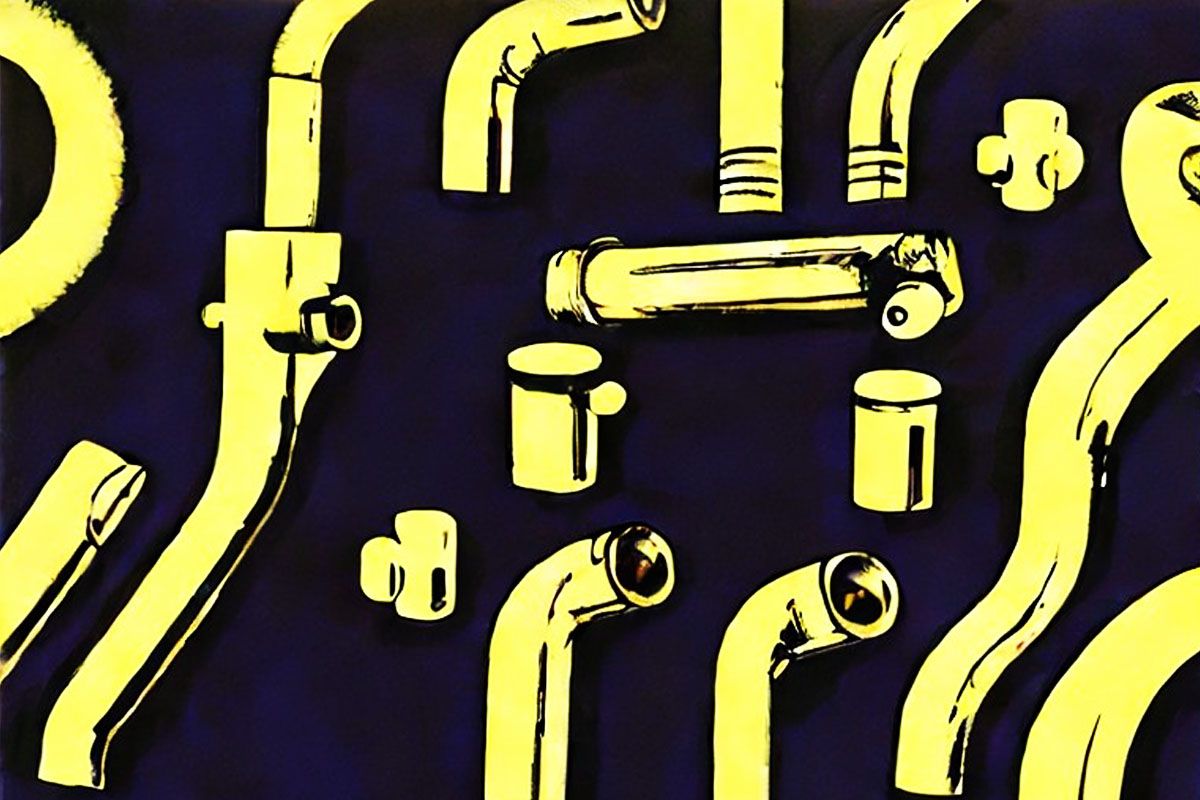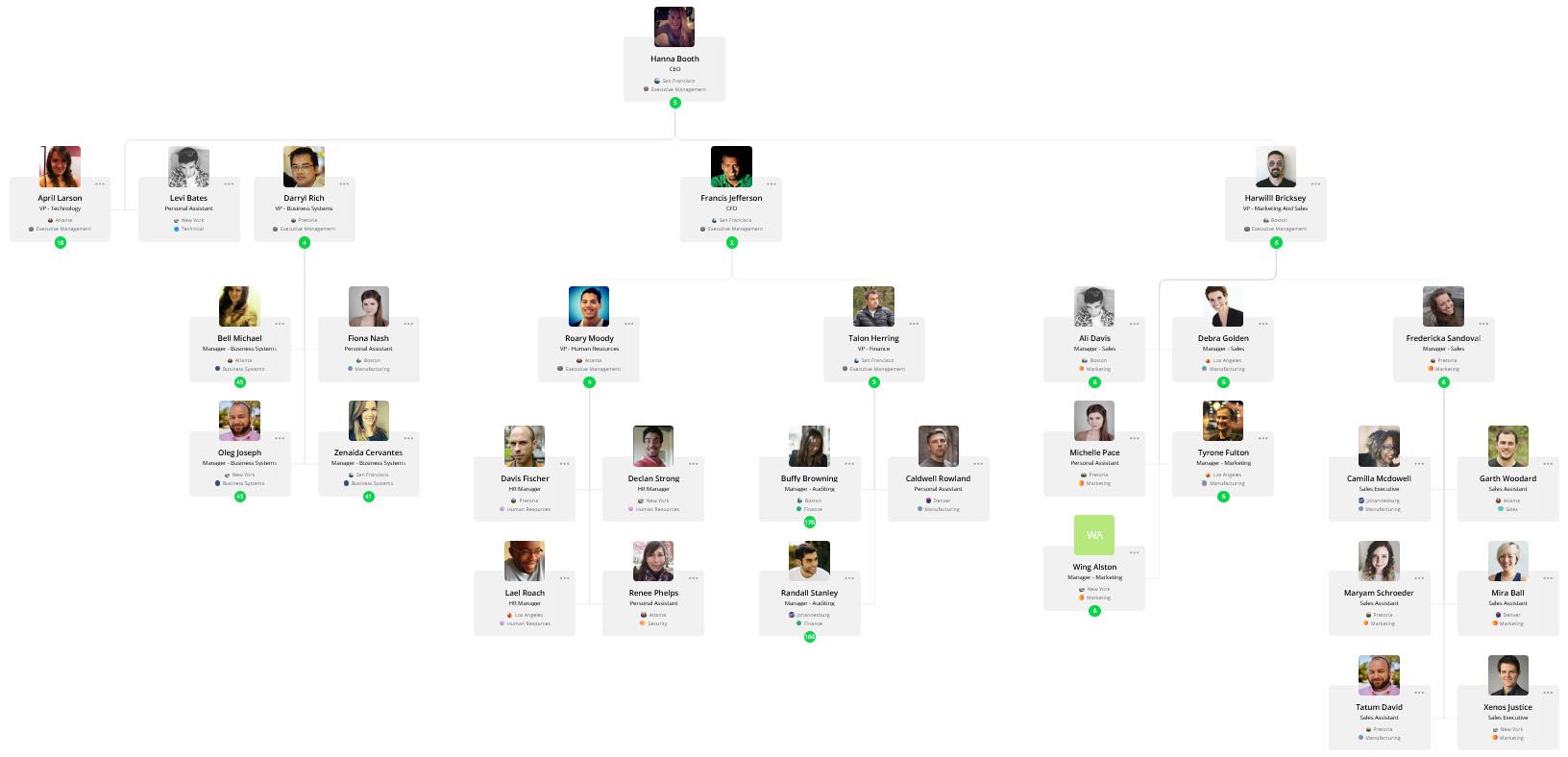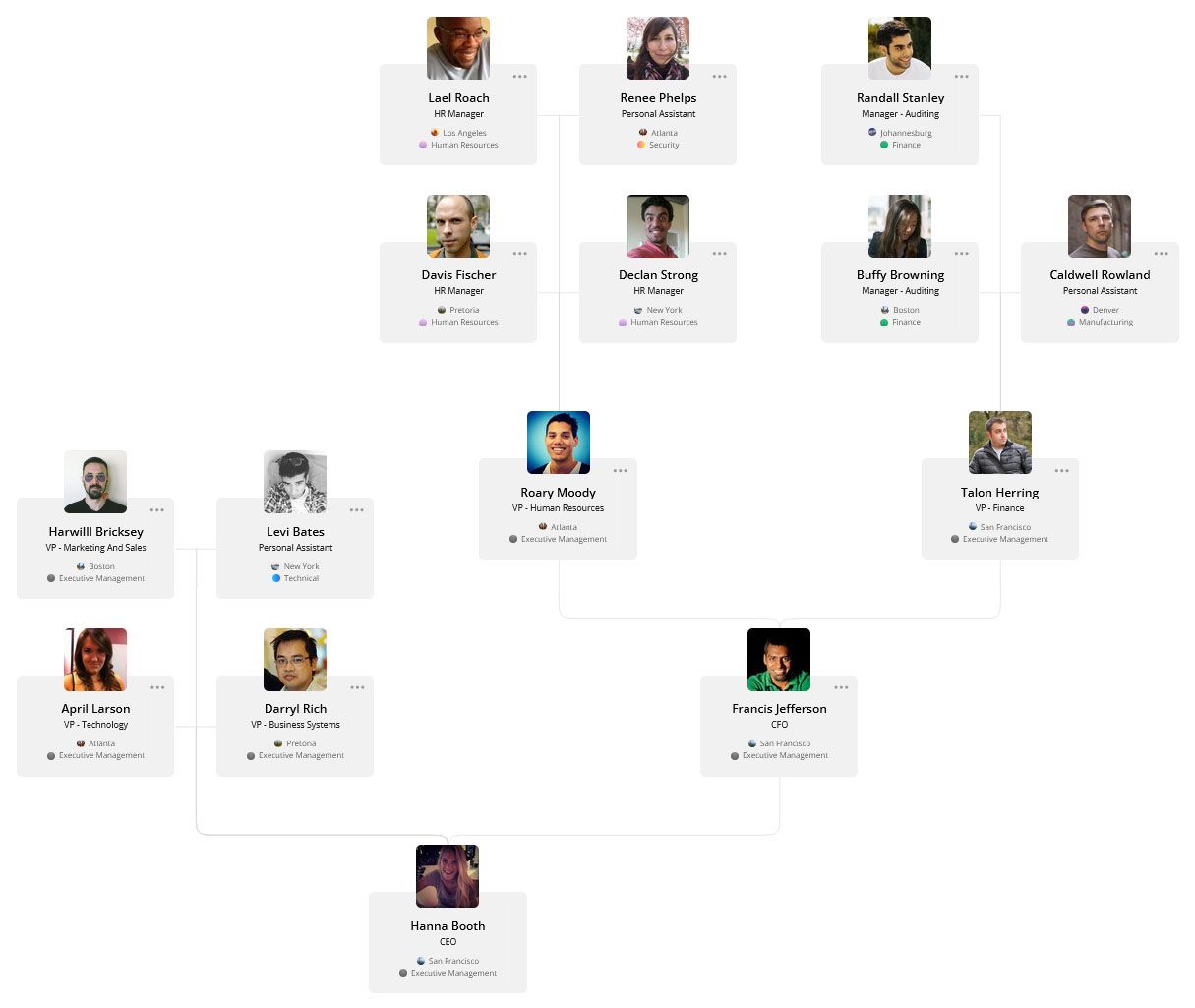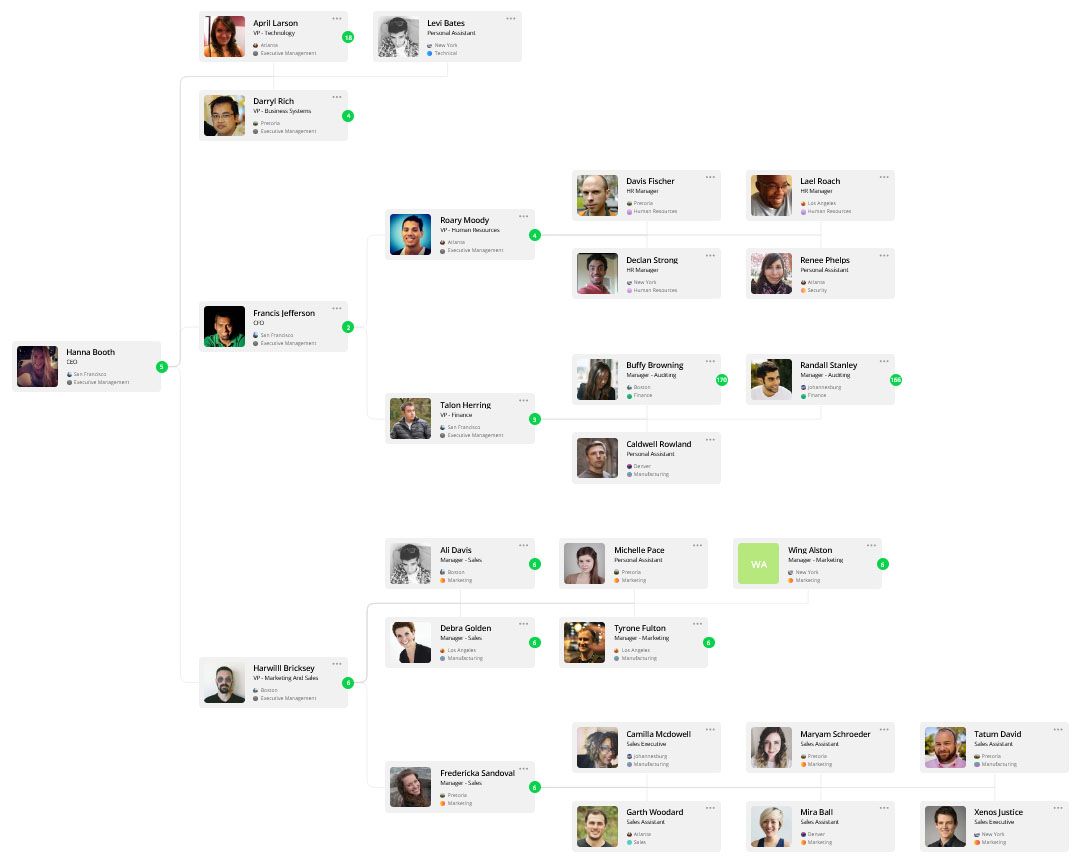The 4 Best Org Chart Layouts and How to Pick the Right One
When it comes to building your org chart, one of the first decisions you need to make is which orientation to use. Let's explore the four common org chart orientations in more detail.

If you’re a business leader, chances are you’ve had to create an organizational chart.
When it comes to building your org chart, one of the first decisions you need to make is which orientation to use.
There are four common org chart orientations.
There's top-down and bottom-up, which are both vertically orientated org charts, and left-to-right which is a horizontally orientated org chart. Then there's the circular org chart orientation, which is a little bit different as we'll explain below.
Let's explore these org chart orientations in more detail.
Top-Down Org Chart
A top-down org chart is a type of vertical organizational chart in which the executive team is displayed at the top of the chart, and lower-level employees are displayed underneath them in a hierarchical fashion.

A top-down organizational chart is typically used in businesses where there is a clear chain of command and a hierarchical reporting structure.
This is the most common org chart orientation you'll come across, since most organizational structures are set up in a top-down reporting hierarchy.

A top-down org chart can be helpful for businesses that need to maintain a high level of control and coordination, such as in manufacturing or military operations. It can also be useful for mapping out the structure of teams that are working on large-scale projects with many moving parts.
While most org charts work well in a top-down orientation, they can be inflexible and may not be well-suited for businesses that require more creativity and freedom in their reporting structures. A top-down org chart can give the impression that your organization is authoritative, which can be a problem if collaboration is a big theme in your organization.
Bottom-Up Org Chart
The bottom-up org chart is another type of vertically oriented organizational chart, but one that represents lower-level employees at the top of the structure, as opposed to managers and executives sitting at the top.

A bottom-up structure works well in organizations that offer a high level of autonomy to their teams. It recognizes an organization's frontline employees as a critical part of the company's success and empowers everyone to participate in leadership and decision making.
Companies tend to use bottom-up org charts when they are running a more decentralized organizational structure, where decision-making authority is spread across multiple employees or teams.
In businesses where creativity and innovation are key drivers of success, a bottom-up structure can work well. Here, employees are free to come up with new ideas and solutions without having to go through a strict top-down reporting hierarchy. This can lead to a more agile and adaptive organization that is better able to respond to changes in the market or in its customer base.
Bottom-up org charts are not without their challenges though.
One potential downside to bottom-up structures is that they can lead to a lack of clarity about who is responsible for what, since a larger number of people are involved in decision-making. Without clear lines of authority, which are more apparent in a top-down organizational structure, it can be difficult to hold people accountable for their actions.
Another downside to bottom-up org charts is that it can sometimes create silos within an organization, as employees may be reluctant to share ideas outside of their own team.
Left-To-Right Org Chart
A left-to-right org chart is a type of horizontal organizational chart that arranges people and positions from left-to-right instead of top-to-bottom.

A left-to-right org chart is essentially a top-down org chart that is rotated 90-degrees, with the company's CEO or other executive leader on the left hand side, and managers and employees flowing in hierarchical fashion to the right.
Although essentially similar to the top-down org chart, a left-to-right org chart can be useful for businesses that want to emphasize teamwork and collaboration over hierarchical authority, and wish to represent this in their org chart diagrams.
One of the key advantages of a left-to-right org chart is that it makes it easy to see who reports to whom and what each person's role is within the organization. Since most of the world already reads from left-to-right, this particular orientation often feels more natural than a strict top-down view, and it can allow more text to be displayed within each block in the org chart.
The left-to-right org chart has similar downsides to the top-down org chart, which is mostly around inflexibility for those companies that are looking for more freedom in their reporting structures.
Circular Org Chart
Circular org charts present a company's organizational structure in a circular fashion instead of the pyramid-like structure of the vertical and horizontal org charts.
In a circular org chart, the reporting structure is displayed from the center outwards, with the innermost circle being the CEO or high level executive, and the outermost rings being the lower-level employees.
The difference between a circular org chart and the other types is mostly psychological, since it focuses less on displaying top-level executives as authority figures and more on presenting the entire organization as being more inclusive and collaborative. In the circular layout, an org chart gives the impression that management is more approachable and teams are more connected.
In terms of visual design, a circular org chart can be more compact and space-efficient if you're looking to print it or include it in a PowerPoint presentation.
However, a circular org chart can be hard to understand since it's not as commonly used as the other types, and there are some disadvantages to using it. People may be unfamiliar with how to read the circular layout and what the circles in the org chart represent, and some people may be hesitant to adopting a new way of looking at their organizational chart when they're already used to a more traditional view. This can be solved with education, but when in doubt it may be best to consider using the more standard top-down or left-to-right layouts.
Which Org Chart Orientation is Right for Your Organization?
When it comes to creating an organizational chart diagram for your business or team it’s important that you choose an orientation that works best for your needs and situation.
Here's a quick recap of the four best org chart layouts and when to choose the right one:
A safe choice, the top-down org chart is best if your organization has a clear chain of command and a structured, hierarchical reporting structure.
Choose the left-to-right org chart layout if you have a structured reporting hierarchy like the top-down, but want to emphasize collaboration over "authority" in your org chart diagram.
Choose bottom-up if you're running a more decentralized organization structure or one where frontline or lower level employees have a lot of autonomy and decision-making power, and you want to emphasize this in your organizational chart diagram.
Consider using a circular org chart if you're looking for a modern style of org chart, one that shows your organization as being more collaborative and inclusive of every level of the reporting line, or if you're looking for a compact org chart design.
...
Each layout has its own unique advantages and disadvantages so make sure you take some time to consider all the options before making a decision. By doing so, you can ensure that your org chart diagram is both effective and visually appealing, helping everyone understand who reports to whom and how your organization is structured.



